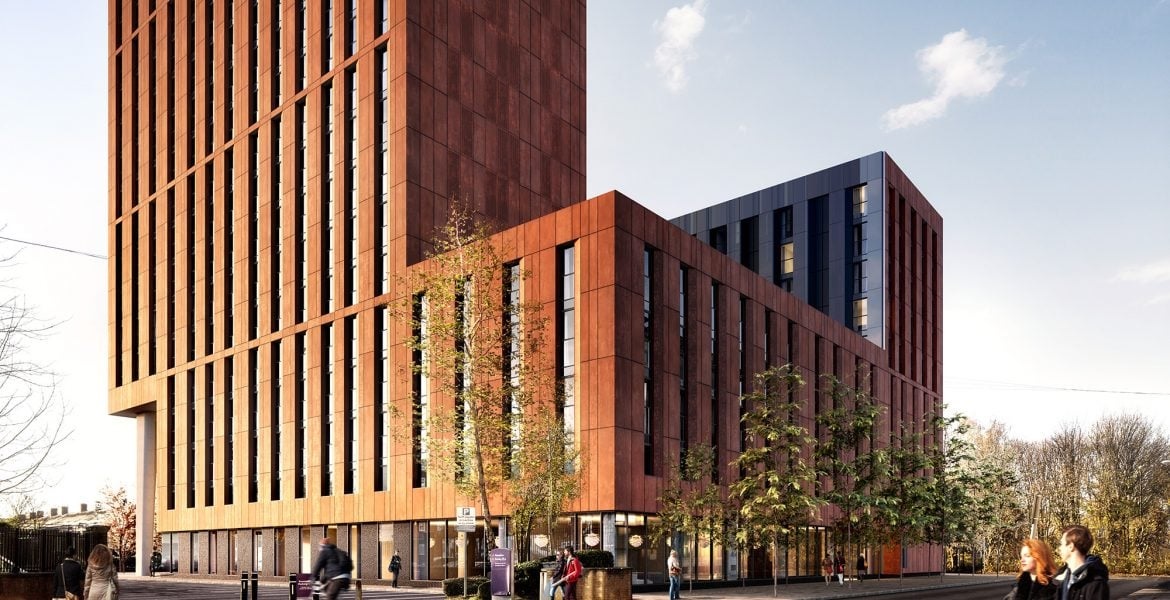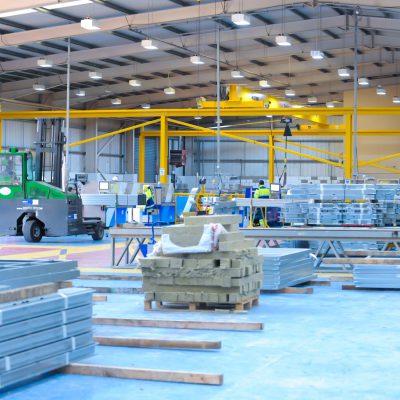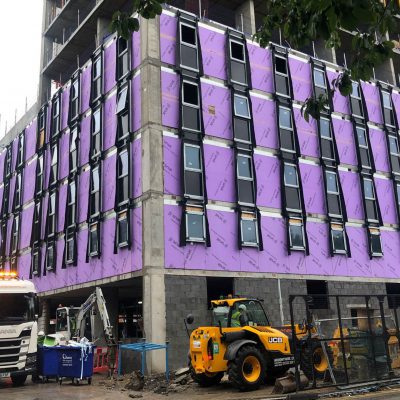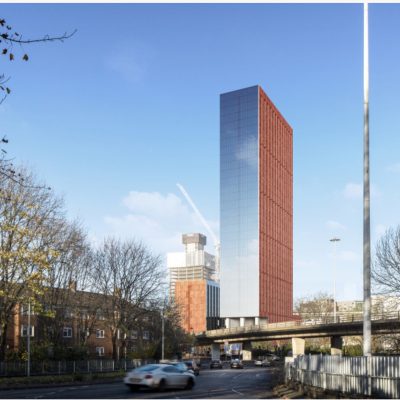River Street Tower, Manchester is a £110 million development located between River Street and Garwood Street, next to the Mancunian Way.
The scheme encompasses 791 student bedrooms within a 32-storey building and includes a mix of studios, cluster bedrooms and apartments as well as amenity spaces. Designed by award winning architects Simpson Haugh and Partners, the project brings high quality, affordable student accommodation to Manchester.
Key Data
Architect:
Simpson Haugh and Partners
Client:
Downing
Engineer:
The Alan Johnston Partnership
Main Contractor:
Downing Construction
Installer/EOS Client:
Alumet
Steel Framing Systems Supplier:
EOS
Materials / Type of System:
Pre Assembled Frames (PAF)
CONSTRUCTION
The outer elevations comprise a combination of Cor-Ten weathered steel rainscreen, in contrast, the inner courtyard elevations comprise a combination of coloured dark-blue back-painted glass rainscreens and dark-blue metal panels.
The construction solution for River Street comprises a main frame concrete structure with infill panels. The offsite manufactured pre-assembled frames (PAF) were pre-boarded and insulated in EOS’s quality-controlled factory using light steel frames from EOS and A1 non-combustible Weather Defence boarding from Siniat as part of an Etex package.
Manufacturing a high performance, airtight building envelope reduces carbon emissions and energy requirements for the lifetime of the building. By decreasing deliveries to site through taking an offsite manufacturing approach, reduces carbon emissions from vehicles and minimises disruption to the local area.
EOS INVOLVEMENT
The prefabrication of the individual steel elements took place under controlled, highly regulated and safe factory conditions. With so much work carried out offsite, the onsite construction schedule was reduced, and the build programme was relatively unaffected by adverse weather conditions. The pre-assembled framing (PAF) systems were pre-panelised complete with boarding and insulation as part of the offsite manufacturing process – reducing the need for working at height. No cutting or hot works were required onsite for the pre-assembled frames which improved site safety.
Once the frames were designed using our 3D Tekla modelling software, all elements were rolled directly from the BIM model ensuring quality and requiring no cutting or reworking onsite. Pre-assembly means that offsite manufactured elements are made ready to ship to site ahead of programme and can be left exposed to the elements for 12 months prior to final finishes being applied. All products were manufactured under strict quality management systems fully compliant with BS EN ISO 9001:2018. Our accredited quality management systems and procedures eradicate onsite variability and ensure lifetime ‘in service’ performance and durability.
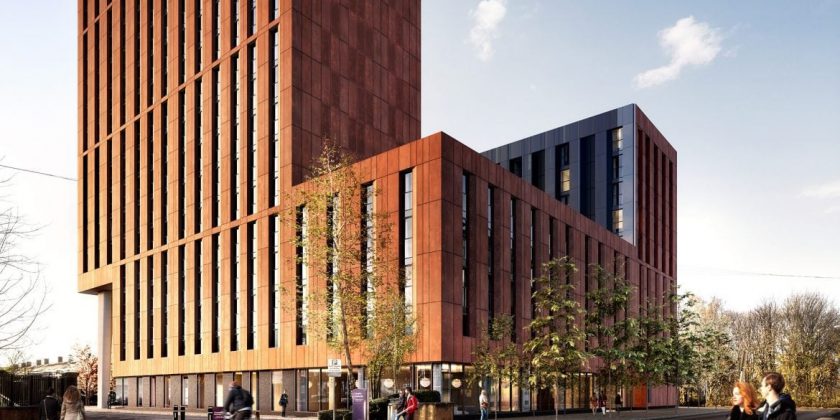
POSITIVE OUTCOMES
Early engagement with our construction partners and BIM integration of the design was crucial to the success of the project. This collaborative approach ensured any additional studs were included for hanging items as well as allowing for brackets and the forming of all vent areas. It also allowed for the windows to be fitted without glazing to speed the build process.
Removing the pre-assembled frames (PAF) from the critical path eliminated risk. Fitting the pre-assembled frames from inside the building, removed the requirement for mast climbers from this stage of the build process. Installers were tethered to the building’s core to ensure a safe working environment.
Embracing a world-class manufacturing ethos and optimising design for manufacture and assembly (DfMA) principles, EOS eliminated waste and value engineered all the pre-assembled SFS systems for the project. The installation team were able to work two floors below the concrete forming. This offsite approach delivered a 30% saving on the installation programme.
